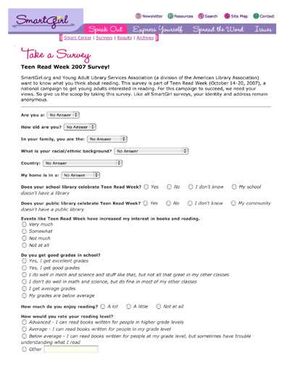Online Surveys for Kids
Adults aren't the only ones with valuable opinions. There are more than 33 million teens and tweens in the United States, according to Market Research.com. American girls spent $80 billion in 1998 alone [source: Selling to Kids]. Companies that want to gather important market research about how kids think, what they like and (most importantly) what they buy have begun to create special online surveys especially for kids.
Just like online surveys for adults, kids surveys can either be free or paid. Many of the larger paid survey sites like Survey Bounty have links to market research firms that pay kids cash to complete surveys. Some surveys are for kids as young as 13 years old, while others have a minimum age of 16. It's typical for kids survey sites to require a parental permission letter to participate, especially for kids under 16.
Advertisement
Like the adult versions of online survey site sites, some survey sites for kids compensate teens with discounts, coupons and freebies on their favorite products and services, rather than paying them directly in cash. Others are completely unpaid.
At sites like SmartGirl, an unpaid opinion and review site for tween and teenage girls, kids are encouraged to take surveys, post advice and share opinions and ideas on a wide variety of topics. Here's an example of a SmartGirl survey sponsored by the Young Adult Library Services Association to gauge how interested teenage girls are in reading books.
Researchers have found that young women in particular are much more likely to share honest opinions and reveal private thoughts through anonymous online surveys and discussion boards than in real-world interviews [source: Selling to Kids]. Companies that establish partnerships with kids' online survey sites can gather useful market research about the types of products that this trend-hopping and fickle generation is most likely to buy, even three or four years down the road.
